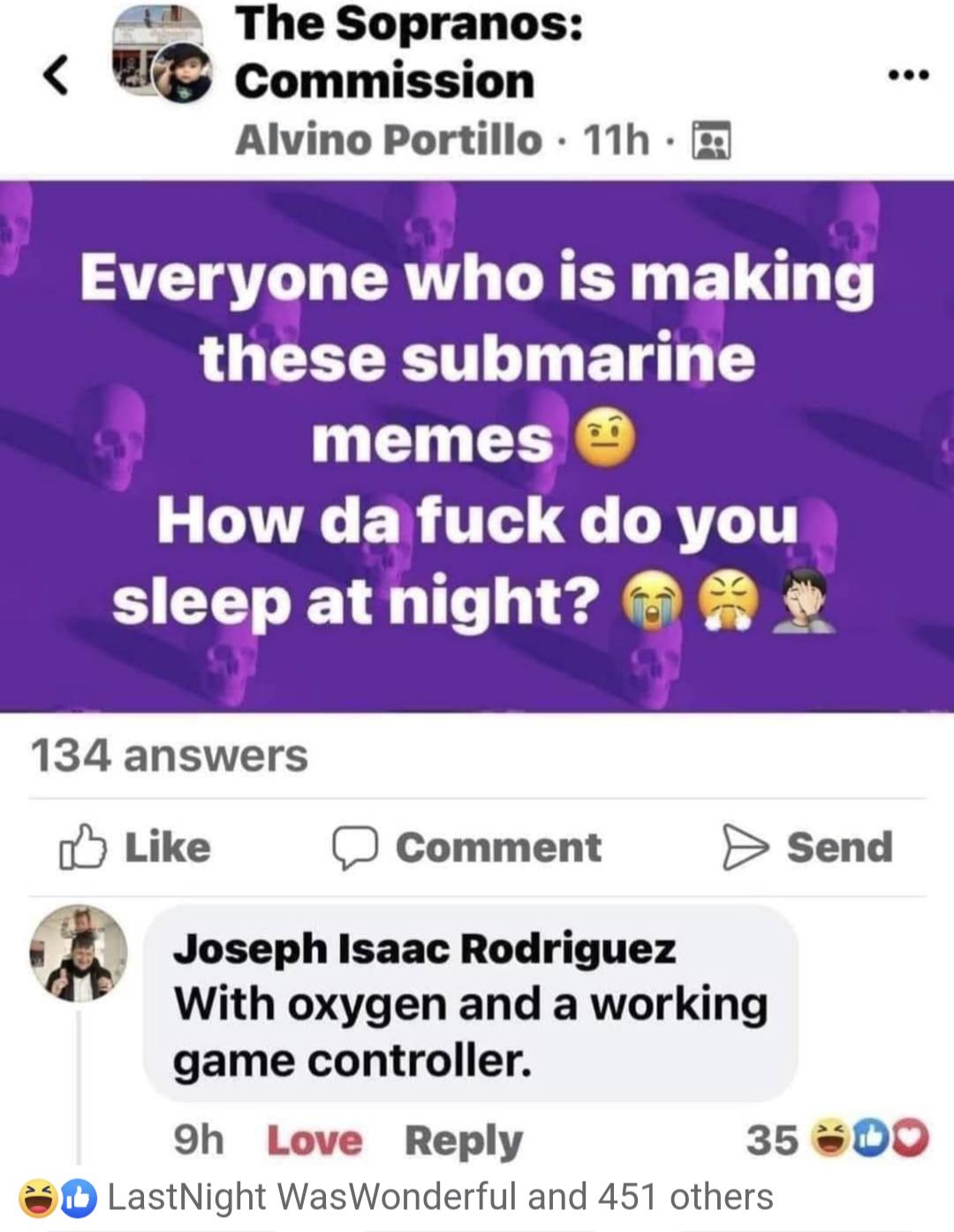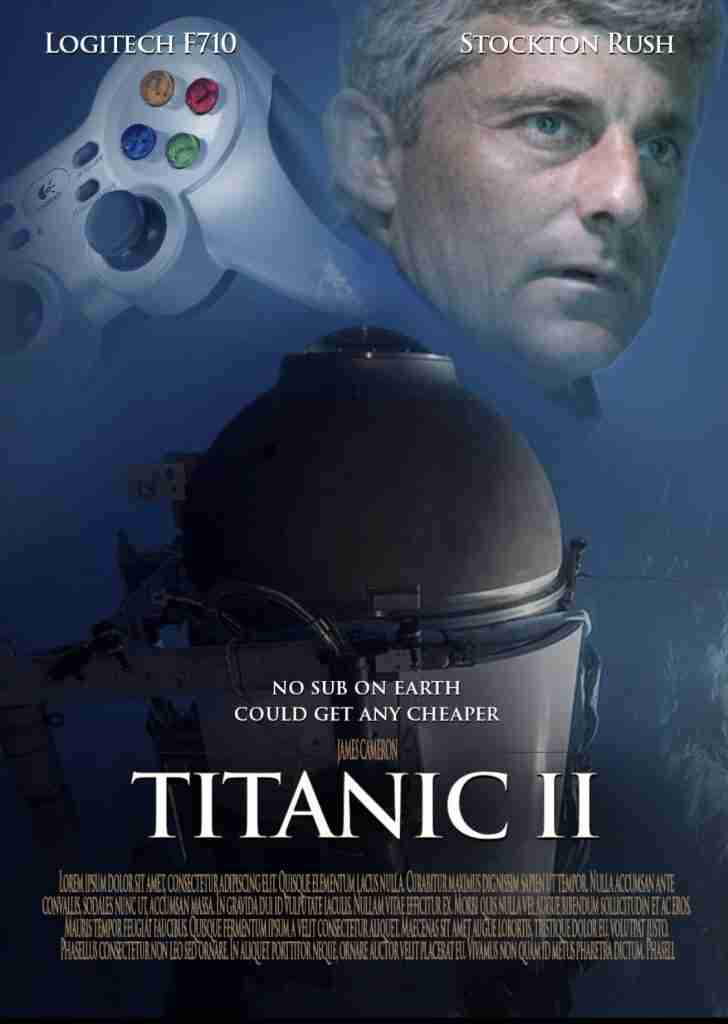Tragedy Strikes as Submersible Goes Missing at Sea: Safety Concerns About Screen Door Surface
Update
The recent tragedy of the ill-fated expedition to the depths of the ocean to view the Titanic has sparked debate and controversy over the appropriateness of parodying the event. While it is understandable to feel sorrow for the explorers and their families, it is important to remember that they were well aware of the risks they were taking and chose to ignore them.

The group of egocentric billionaires had been warned by experts and their own staff that the vessel they were using was not certified for the depths they were attempting to reach. Despite this, they decided to take the risk and embark on the journey. It is not in poor taste to parody the event, as the explorers were fully aware of the risks they were taking and chose to ignore them.

The explorers were also warned of the potential dangers of the ocean depths, such as the pressure, the darkness, and the absence of oxygen. Despite this, they chose to embark on the journey, which ultimately led to the vessel imploding and the death of everyone onboard.

The tragedy of the ill-fated expedition to view the Titanic is a reminder of the importance of listening to experts and heeding warnings. While it is understandable to feel sorrow for the explorers and their families, it is not in poor taste to parody the event, as the explorers were well aware of the risks they were taking and chose to ignore them. It is important to remember that the tragedy was preventable and that the explorers should have listened to the experts and their own staff.

UPDATE
It was a normal day for the submersible, cruising along the ocean floor, exploring the depths of the unknown. But then something strange happened; the crew was suddenly forced to watch nothing but James Cameron movies because that is the only DVD movies that would play on the Sony PS2 in the corner that was also used in piloting the ship. Ironically, Titanic, Avatar, the other Avatar movie and others were onboard for the passenger's enjoyment.
 According to an inside source at the US Navy they knew about the implosion far earlier than anyone else as they picked up the sound of Cameron's movie with sonar used to detect submarine noises. They knew what had happened but could not confirm. They then relayed this information to the Coast Guard who continued to search.
According to an inside source at the US Navy they knew about the implosion far earlier than anyone else as they picked up the sound of Cameron's movie with sonar used to detect submarine noises. They knew what had happened but could not confirm. They then relayed this information to the Coast Guard who continued to search.
 At first, the submersible was able to withstand the onslaught of movies, but eventually it started to feel the strain. It was like the submersible was being crushed by the weight of Cameron's films. The submersible was pushed to its limits and eventually it just couldn't take it anymore.
At first, the submersible was able to withstand the onslaught of movies, but eventually it started to feel the strain. It was like the submersible was being crushed by the weight of Cameron's films. The submersible was pushed to its limits and eventually it just couldn't take it anymore.
 With a loud bang, the submersible imploded, unable to withstand the pressure of Cameron's movies any longer. The crew of the submersible were never seen again, their fate sealed by the force of Cameron's cinematic vision.
In the end, the submersible was a victim of its own curiosity; it had ventured too deep into the unknown and paid the ultimate price for its curiosity. It is also possible that the installed screen door played a role as well.
James Cameron was unavailable for comment.
With a loud bang, the submersible imploded, unable to withstand the pressure of Cameron's movies any longer. The crew of the submersible were never seen again, their fate sealed by the force of Cameron's cinematic vision.
In the end, the submersible was a victim of its own curiosity; it had ventured too deep into the unknown and paid the ultimate price for its curiosity. It is also possible that the installed screen door played a role as well.
James Cameron was unavailable for comment.
The Ill-Fated Journey:
The tragic journey commenced as part of an exclusive eight-day expedition organized by OceanGate Expeditions. Priced at an exorbitant $250,000 per person, the trip promised a once-in-a-lifetime opportunity to witness the haunting wreckage of the Titanic up close. Departing from Newfoundland, Canada, the submersible began its descent to the wreck site on June 18. However, a mere 1 hour and 45 minutes into the dive, the submersible lost all contact with its support ship, the Polar Prince, leaving the passengers stranded in the unfathomable depths.
The Missing Passengers:
While the identities of the five missing individuals have not been officially disclosed, several notable figures are believed to be among them. British businessman Hamish Harding, French diver Paul-Henri Nargeolet, and Pakistani billionaire Shahzada Dawood and his son Sulaiman Dawood have been confirmed as part of the ill-fated expedition. Additionally, OceanGate CEO and founder Stockton Rush is reported to have been on board the submersible.
The Race Against Time:
With the submersible designed to carry a limited supply of 96 hours' worth of oxygen for its occupants, a desperate race against the clock unfolded. As of Tuesday afternoon, the US Coast Guard estimated that approximately 40 hours of oxygen remained. This narrow window provided search and rescue operations with limited time to locate and retrieve the vessel. Yet, daunting challenges such as the remote location, adverse weather conditions, and the extreme depth of the ocean impeded the rescue efforts.

Safety Lapses and Mysterious Equipment Failure:
As details continue to emerge regarding the ill-fated submersible, troubling safety concerns and mysterious equipment failures have come to light. Most notably, reports suggest that the submersible was equipped with a highly suspect screen door and lacked windows. Such glaring oversights raise serious questions about the vessel's safety protocols, engineering decisions, and adherence to industry standards. The presence of a screen door, typically unsuitable for underwater vessels, underscores potential lapses in design and safety assessments.

Windows, essential for providing external visibility and vital communication with the surface, were conspicuously absent from the submersible. This omission further compounds the safety concerns surrounding the ill-fated expedition. The absence of windows not only deprives occupants of crucial situational awareness but also impedes potential rescue efforts, as visual contact with the outside environment becomes impossible.
Safety Concerns and Industry Scrutiny:
The tragic incident has cast a spotlight on the safety standards and practices of deep-sea tourism. Prior concerns about OceanGate's safety protocols, including doubts about the thickness of the Titan's hull, have resurfaced with renewed urgency. Conflicting information has emerged regarding the vessel's engineering and testing, as the involvement of the University of Washington's Applied Physics Laboratory is called into question. Industry leaders had previously expressed reservations about OceanGate's experimental approach, raising concerns about the reliability and robustness of the submersible.
Conclusion:
The disappearance of the submersible and its occupants during an expedition to explore the Titanic wreckage serves as a distressing reminder of the inherent risks involved in deep-sea tourism.

